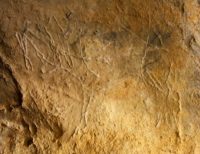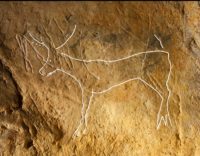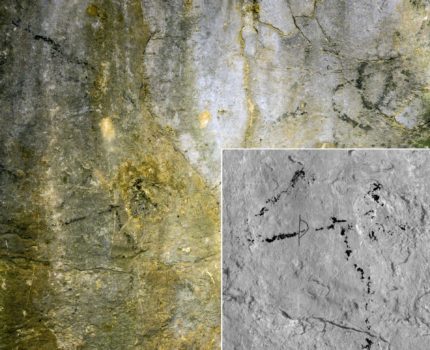University of Tübingen archaeologists have discovered Ice Age art hidden under graffiti in two caves near Rully, eastern France. Created at least 12,000 years ago, the two works depict a horse and a prehistoric deer. They used stone tools to carve the deer into the cave wall. The horse was drawn with a black paint.
The research team has been studying caves in southern Burgundy, an area where Neanderthals and modern humans are believed to have lived at the same time, for more than two decades. There are a significant number of Paleolithic sites at Rully but cave art had never been found before in 150 years of paleological exploration. The sheer frequency of prehistoric sites suggested there was cave art to be found, however, so the Tübingen researchers kept looking. They hit paydirt in the Grottes d’Agneux, thanks to technology and special expertise.
The researchers worked with an expert on prehistoric cave art, Juan Ruiz of the University of Cuenca in Spain. They analyzed the cave walls using modern scanning techniques. Because the images had been covered with later graffiti from the 16th to 19th centuries, the archaeologists used special image-processing computer programs to reconstruct the original works underneath the other layers. They also compiled many individual photos into a photogrammetric documentation of the works in order to give them a more three-dimensional look.
Using carbon-14 dating methods, the archaeologists were able to date charcoal found in the cave – and the creation of the art – as far back as 12,000 years ago – to the Upper Palaeolithic period. This method measures how much time has passed by the radioactive decay of the 14C isotope originally present in the ancient wood. French authorities inspected the cave art and confirmed its legitimate interest in mid-2018; further research is planned.


